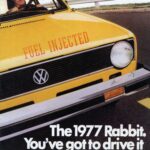The De Dion tube suspension, known for its ability to provide excellent handling and ride comfort, has a rich history in automotive engineering, particularly with Alfa Romeo. While often perceived as a costly choice, the implementation of De Dion Suspension in Alfa Romeo vehicles wasn’t solely driven by government subsidies but rather by a complex interplay of factors, including engineering expertise, financial constraints, and political influence.
The Economic Landscape of Alfa Romeo
Contrary to popular belief, Alfa Romeo operated with relatively balanced budgets for a significant period. Yearly financial records from 1954 to 1985 demonstrate a consistent effort to maintain financial stability. However, the 1973 oil crisis and the politically motivated Alfasud project significantly impacted the company’s financial health. The Alfasud, a government-subsidized initiative, forced Alfa Romeo into unfavorable funding contracts and diverted resources from other projects.
A key example of the financial challenges faced by Alfa Romeo is the resignation of CEO Luraghi. When Luraghi requested funding to expand the Arese plant to meet the high demand for Alfettas, the request was denied. Instead, the government offered funding to build Alfettas in the less efficient Sud plants. This decision, driven by political rather than economic considerations, ultimately hindered Alfa Romeo’s growth and profitability.
De Dion Suspension: A Balancing Act of Cost and Performance
Alfa Romeo engineers consistently sought innovative solutions to enhance vehicle performance, even amidst financial limitations. The De Dion suspension, chosen for the Alfetta, exemplifies this commitment. While arguably the most expensive of the three rear suspension options considered, the De Dion offered superior technical advantages and potentially lower development costs compared to a fully independent rear suspension (IRS) system.
Giuseppe Busso, a renowned Alfa Romeo engineer, attested to the De Dion’s technical superiority. Its selection likely reflected a balance between performance goals and the pragmatic need to minimize development expenses, leveraging the existing expertise of Alfa Romeo’s engineers. The De Dion’s inherent advantages in handling and ride quality aligned with Alfa Romeo’s focus on creating exceptional driving experiences.
The Legacy of Innovation Despite Financial Constraints
Alfa Romeo’s achievements in automotive engineering, including the implementation of the De Dion suspension, should be viewed within the context of its challenging financial reality. Rather than attributing the company’s success solely to government subsidies, a more accurate perspective recognizes the ingenuity and dedication of its engineers and workforce who consistently delivered innovative solutions despite chronic underfunding. The De Dion suspension stands as a testament to Alfa Romeo’s unwavering commitment to performance, achieved through resourceful engineering and a willingness to embrace technically advanced solutions even in the face of financial adversity. The Giulia, a landmark achievement in Alfa Romeo’s history, highlights the company’s ability to innovate despite limited resources, demonstrating that financial constraints did not stifle engineering excellence.
Conclusion
The De Dion suspension in Alfa Romeo vehicles represents a strategic decision driven by a combination of performance aspirations and economic realities. While acknowledging the role of government involvement in the Italian automotive industry, it’s crucial to recognize Alfa Romeo’s commitment to engineering excellence. The De Dion’s selection highlights the company’s ability to balance performance goals with financial constraints, resulting in vehicles that delivered exceptional driving experiences despite limited resources. The story of the De Dion suspension in Alfa Romeo cars is a story of innovation achieved through engineering ingenuity and a relentless pursuit of performance, not simply a result of government subsidies. It exemplifies a dedication to pushing the boundaries of automotive technology, even within a challenging financial landscape.

